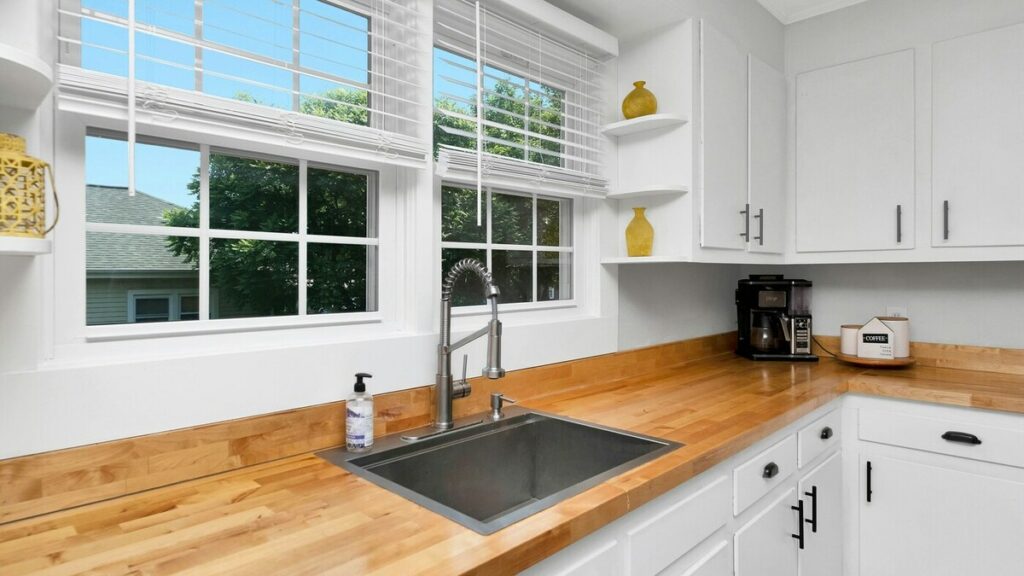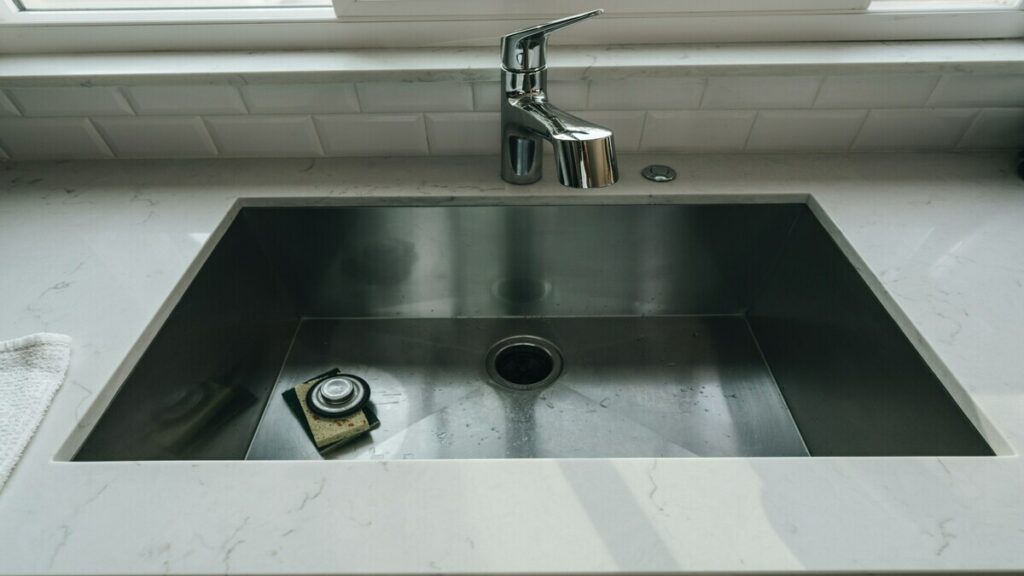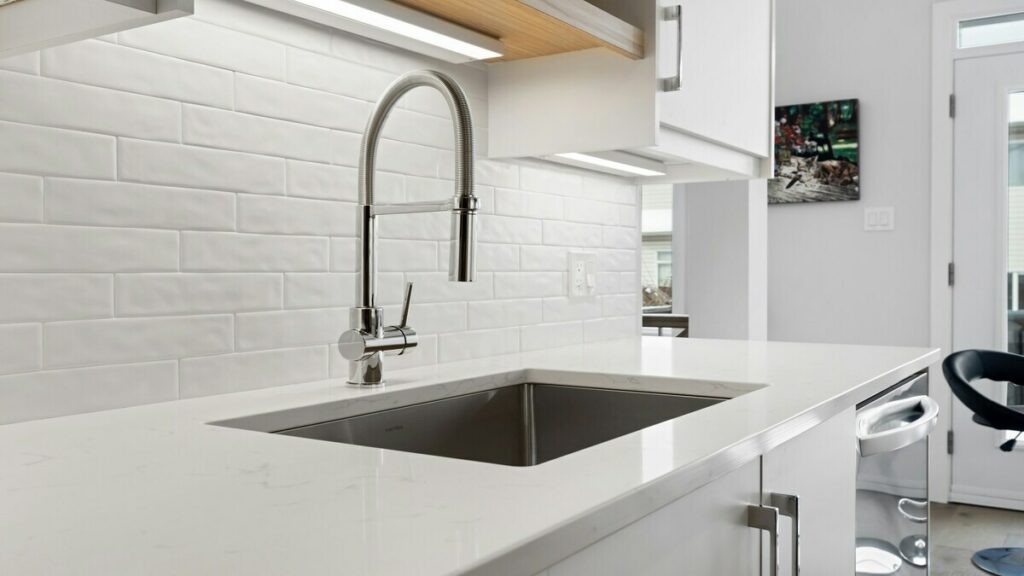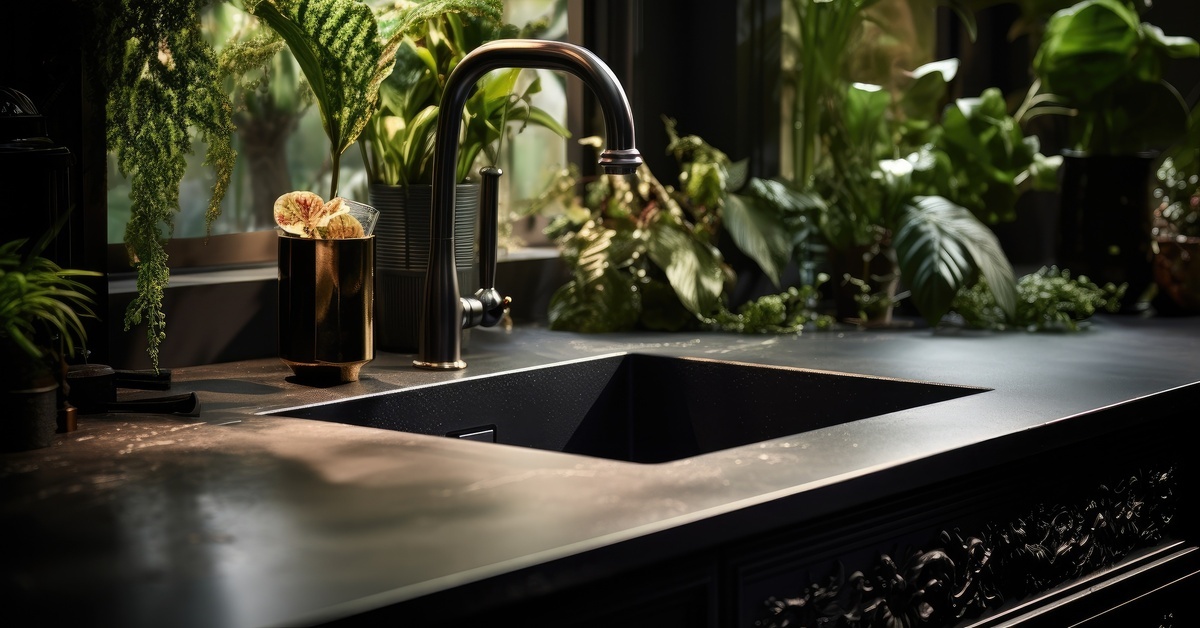Choosing the right kitchen sink is essential, as it’s one of the most frequently used fixtures in any home. Stainless steel sinks are popular for their durability, sleek look, and affordability. However, deciding between a drop-in sink or an undermount sink can be challenging. This guide breaks down the key differences between these two popular options, highlights their pros and cons, and provides tips on assessing sink quality, so you can make an informed decision.
What’s the Difference Between Drop-In and Undermount Sinks?


Before diving into details, let’s clarify what makes drop-in sinks and undermount sinks unique.
• Drop-In Sink: A drop-in, or top-mount sink, is installed by fitting it into a pre-cut hole on the countertop. The sink’s edges rest on the countertop surface, making it easy to install.
• Undermount Sink: An undermount sink, on the other hand, is mounted below the countertop. It creates a seamless look as there is no visible rim, making countertop cleaning easier.
Let’s examine the benefits and drawbacks of each type to see which may be better for your kitchen.
Advantages and Disadvantages of Drop-In Sinks
Drop-in sinks are often the go-to choice for DIY enthusiasts and homeowners looking for straightforward installations. Here’s a closer look at the benefits and potential downsides of choosing a drop-in sink.
Pros of Drop-In Sinks
• Ease of Installation: Drop-in sinks are simpler to install because they don’t require support underneath. This makes them suitable for almost any countertop material.
• Affordability: Generally, drop-in sinks are more affordable, which is ideal for budget-conscious renovations.
• Variety in Styles and Sizes: Available in various styles, drop-in sinks offer flexibility in choosing different materials, like stainless steel, porcelain, or composite.
Cons of Drop-In Sinks
• Cleaning Challenges: The rim of a drop-in sink can trap food particles and grime, making cleaning slightly more time-consuming.
• Less Seamless Look: Drop-in sinks don’t offer the sleek, seamless look that many homeowners desire, which is a key advantage of undermount sinks.
Advantages and Disadvantages of Undermount Sinks
Undermount sinks are often seen in modern, high-end kitchens. They attach below the countertop, providing a smooth and stylish appearance.
Pros of Undermount Sinks

• Sleek, Modern Look: The flush installation offers a seamless appearance that integrates beautifully with granite, quartz, and solid-surface countertops.
• Easy to Clean: With no lip on the countertop, it’s simple to wipe food and liquids directly into the sink.
Cons of Undermount Sinks
• Higher Installation Cost: Installing an undermount sink is more complex, often requiring professional installation and support brackets, especially for heavier sinks.
• Limited to Solid Countertops: Not all countertop materials support undermount installation; they work best with non-porous surfaces like granite or quartz.
Comparing Material and Durability: Stainless Steel Sinks
Stainless steel sinks remain one of the most popular choices because of their resilience, versatility, and stylish appeal. Both drop-in and undermount sinks come in stainless steel options, but here’s what you need to consider:
• Noise Level: Undermount sinks can be noisier unless fitted with sound-dampening pads, often included with premium stainless steel models.
• Susceptibility to Scratches: While stainless steel is durable, it’s prone to scratching. Thicker steel (lower gauge) minimizes visible scratches and dents, making it a great option for both drop-in and undermount styles.
How to Tell the Quality of a Stainless Steel Sink
For a stainless steel sink to last, it’s crucial to invest in quality. Here’s a guide on how to evaluate stainless steel sinks to avoid poor-quality materials that could wear out over time.
1. Gauge Thickness
The gauge refers to the thickness of the stainless steel; lower gauges are thicker and generally more durable. For everyday use, aim for 16 or 18 gauge steel. Lower gauge (e.g., 22 or 24) may be more affordable but won’t withstand as much wear and tear.
2. Stainless Steel Grade
Look for 304-grade stainless steel. It’s corrosion-resistant and contains more chromium and nickel, adding both durability and a polished look. Lower grades are more likely to rust over time, which isn’t ideal for a heavily-used kitchen sink.
3. Sound-Dampening Features
High-quality stainless steel sinks, especially undermount types, often come with sound-dampening pads or a spray coating underneath. These features reduce noise when washing dishes, making the kitchen environment quieter.
4. Finish and Scratch Resistance
A satin or brushed finish resists visible scratches and retains a clean look even with heavy use. Polished or mirror finishes may look attractive initially, but they quickly show water spots and scratches.
Using this guide, you can easily spot durable, long-lasting stainless steel sinks, whether you choose a drop-in or undermount style. Options like the Kohler Prolific 16 Gauge Undermount Sink offer the right balance of thickness, sound dampening, and finish, ensuring high quality.
Explore these options on Amazon or Home Depot
Which Sink Type Is Right for You?
The decision between a drop-in and undermount sink comes down to your kitchen style, budget, and installation preferences. If you’re prioritizing ease of installation, a drop-in sink might be your best bet. For a modern, high-end aesthetic, an undermount sink offers a sleek look and ease of cleaning.
• Best for DIY and Budget-Friendly Remodels: Drop-in sinks are easier to install and more affordable, fitting a variety of countertop styles.
• Best for a Seamless and Modern Look: Undermount sinks provide a streamlined appearance and work well with solid-surface countertops like granite and quartz.
Maintenance and Cleaning
• Drop-In: The exposed rim can collect grime, so regular cleaning is needed. However, stainless steel is easy to wipe down with soap and water.
• Undermount: Without a rim, cleaning is simplified. Simply sweep any debris from the countertop directly into the sink.
Aesthetics and Style
• Drop-In: These sinks add a slightly more traditional look but can still look sleek in stainless steel, which matches most modern kitchens.
• Undermount: This style provides a modern, seamless appearance that works well in high-end or minimalist kitchens.
Budget
• Drop-In: Drop-in sinks are usually less expensive and have lower installation costs.
• Undermount: More costly upfront and for installation, but the seamless look may be worth it for a luxury kitchen renovation.
Stainless Steel Sinks: Why They’re a Top Choice for Both Styles?
Stainless steel is one of the most popular materials for both drop-in and undermount sinks due to its durability, resistance to rust, and timeless appeal. Here’s why stainless steel sinks from brands like Kohler are a reliable choice for homeowners.
• Durability: Stainless steel is highly resistant to scratches and heat, making it ideal for busy kitchens.
• Easy Maintenance: Simple to clean, stainless steel is less likely to stain or absorb odors.
• Versatile Design: The sleek, metallic finish fits both modern and classic kitchen designs.
Looking for a specific model? Check out this Kohler stainless steel sink that pairs quality with affordability. Kohler Stainless Steel Sink – Explore on Amazon or Home Depot
Maintenance Tips for Stainless Steel Sinks
Keeping your stainless steel sink in top condition will ensure it lasts for years. Here are some tips for maintaining both drop-in and undermount stainless steel sinks:
• Daily Cleaning: Use a soft cloth and mild dish soap to wipe down the sink after each use. Avoid abrasive scrubbers, which can scratch the surface.
• Prevent Water Spots: Wipe the sink dry after each use to prevent hard water stains.
• Deep Clean Weekly: Use a paste of baking soda and water for a deeper clean. This natural method removes grime and helps maintain the stainless steel shine.
Final Thoughts
Both stainless steel drop-in and undermount sinks bring unique benefits and are widely available in a range of styles. By focusing on stainless steel quality indicators—like gauge thickness, grade, sound-dampening, and finish—you can choose a sink that suits your style and budget while ensuring long-lasting durability.
Whether you’re installing a new drop-in or upgrading to an undermount model, remember that brands like Kohler on Amazon or Home Depot offer reliable, high-quality options. From noise-reducing designs to scratch-resistant finishes, there are plenty of stainless steel sinks available to fit both your aesthetic and practical needs.
Frequently Asked Questions (FAQs)
1. Are Drop-In Sinks Outdated?
While drop-in sinks may be considered less sleek than undermount sinks, they are far from outdated. Drop-in sinks remain popular due to their easy installation, versatility with various countertop materials, and affordability. They are widely used in both traditional and modern kitchens, and newer designs offer contemporary looks that appeal to today’s homeowners.
2. What is the Downside to Undermounting a Kitchen Sink?
Undermount sinks offer a seamless look but come with a few downsides. They require professional installation, especially for heavier materials, and they may increase the risk of water damage to the countertop if not sealed properly. Additionally, undermount sinks work best with solid, non-porous countertops, which can be limiting for some types of kitchen remodels.
3. Which Kitchen Sink is Better: Stainless Steel or Granite?
Both stainless steel and granite sinks have unique advantages. Stainless steel is durable, affordable, and easy to clean, making it a practical choice for high-use kitchens. Granite sinks, on the other hand, provide a luxurious appearance and can resist scratches and stains, but they are heavier, require more maintenance, and are typically more expensive.
4. Do Drop-In Sinks Add Value to a Home?
Drop-in sinks may not add significant value compared to more modern undermount options, but they are still practical and reliable. Choosing a high-quality drop-in sink in stainless steel or another durable material can add functionality and aesthetic appeal, especially in rental or starter homes.
5. Is a Drop-In Sink Easier to Install Than an Undermount Sink?
Yes, drop-in sinks are generally easier to install because they rest on top of the countertop, eliminating the need for special mounting brackets or professional assistance. This makes them a popular choice for DIY projects or budget-friendly remodels.
When considering kitchen upgrades, it’s essential to explore not just the right sink, but also how it fits into your overall design vision. Just like selecting the perfect sink, choosing the ideal fixtures and storage solutions can elevate your space. For inspiration, check out our blog on Best Toilet Reviews: 8 Luxury Options For Your Bathroom and discover 30 Creative Remodeling & Storage Ideas for Small Bathrooms.
Here’s a little transparency: Our website contains affiliate links. This means if you click and make a purchase, we may receive a small commission. Don’t worry, there’s no extra cost to you. It’s a simple way you can support our mission to bring you quality content.






